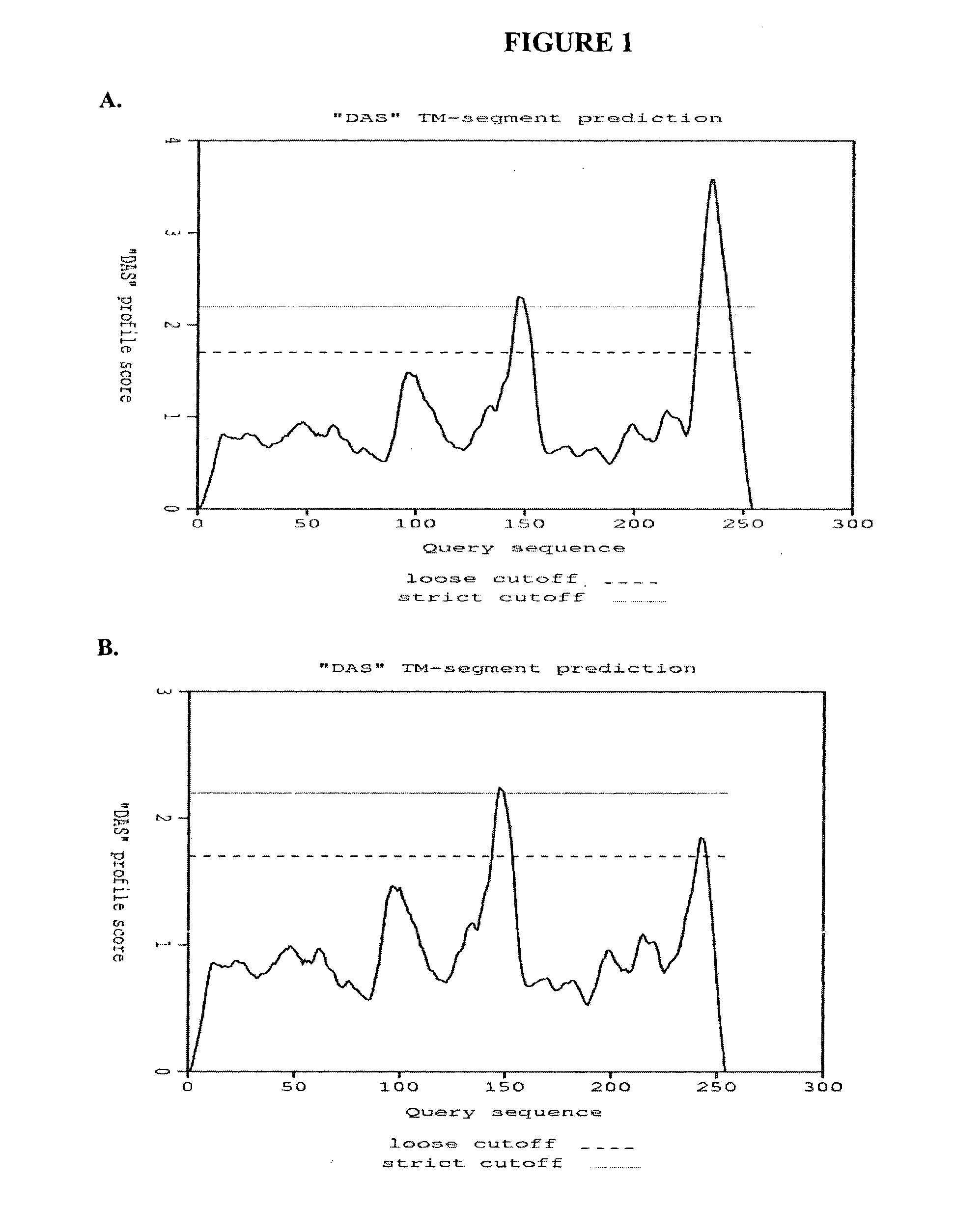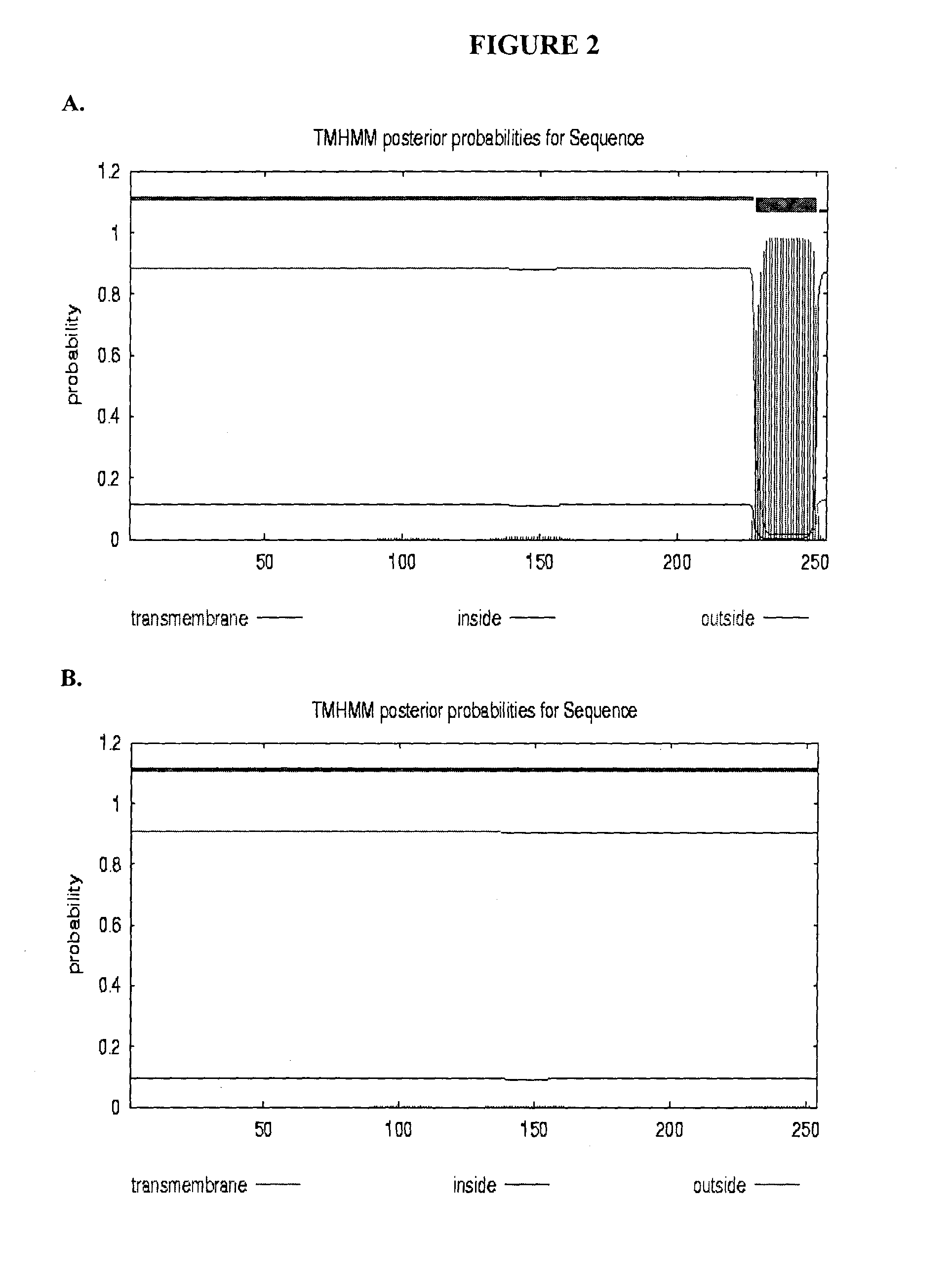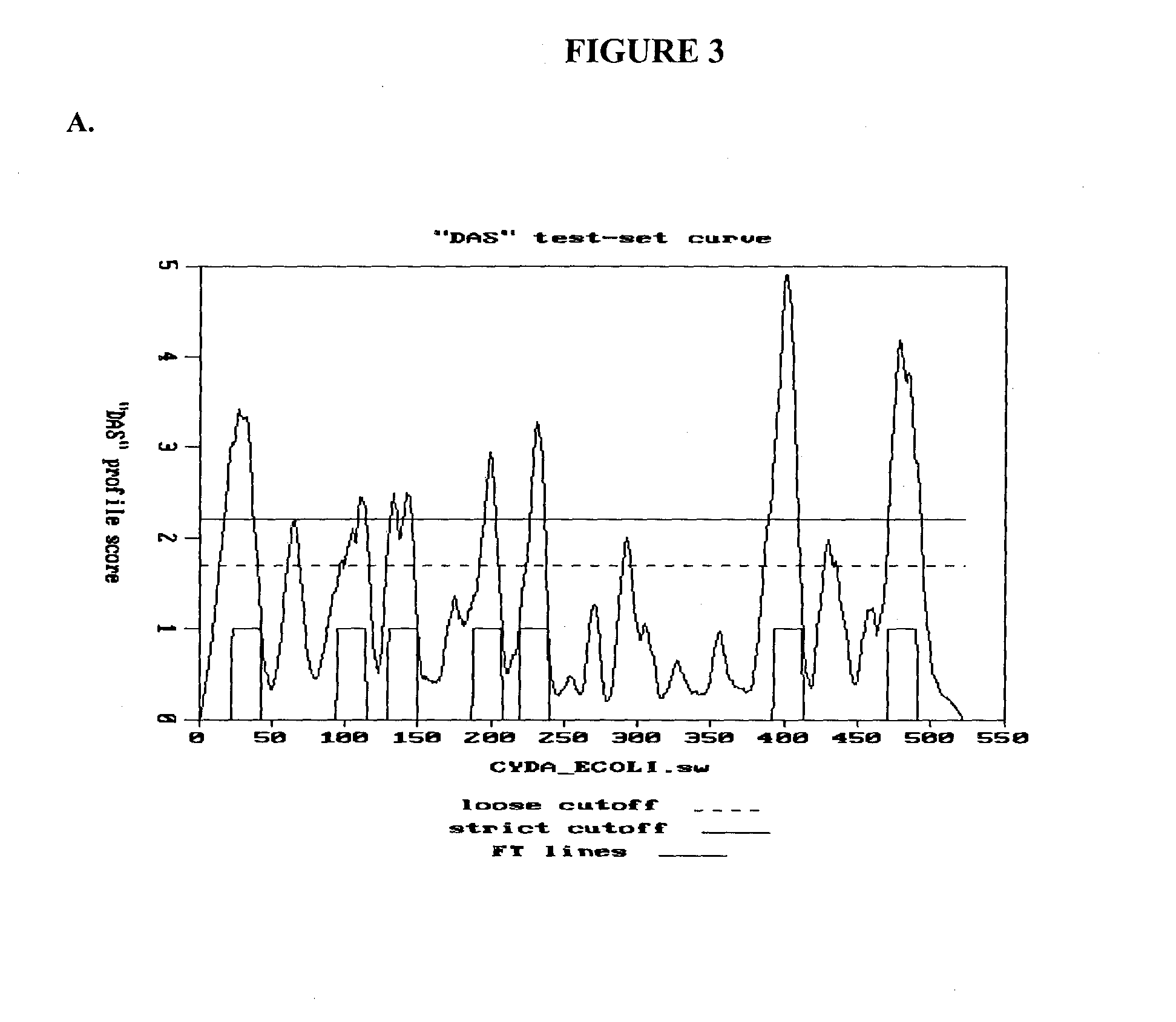Chimeric antibacterial polypeptides
a polypeptide and antibacterial technology, applied in the field of chimeric antibacterial polypeptides, can solve the problems of affecting the immune system of persons without effective immune systems, affecting the immune system, so as to inhibit the cell inhibit the growth of the and reduce the number of target bacteria in the individual.
- Summary
- Abstract
- Description
- Claims
- Application Information
AI Technical Summary
Benefits of technology
Problems solved by technology
Method used
Image
Examples
example 1
GP36 Enzymatic Test Construct
A. Muralytic Domain Construct
[0211]We isolated the ORF36 sequence from Pseudomonas phage P134 (SEQ ID NO: 1). The translation product is shown as SEQ ID NO:2. Based on analysis of the sequence, a murein degrading catalytic domain fragment was identified spanning amino acids 737-875 of SEQ ID NO:2. An expression vector was constructed with a promoter and adjacent initiation codon linked to amino acid 683, so that the nucleic acid construct encodes amino acids 683-898. See SEQ ID NO: 5, which is translated as SEQ ID NO: 6. This segment was designated the GP36 CD fragment.
[0212]A sequence was added (thereby removing the termination codon from the end of GP36) to provide an extension of 13 amino acids comprising a 6 His purification tag (for purification on a Nickel column). The construct results in a polypeptide having SEQ ID NO: 7.
[0213]The expression construct was introduced into E. coli, production of protein was induced, and cells harvested. The cell pe...
example 2
Membrane Transfer Domains
A. Chimera Comprising Muralytic Domain and Membrane Transfer Domain
[0216]To access the peptidoglycan layer in a normal Gram-negative bacterial target, a physiologically compatible means for penetrating the bacterial outer membrane barrier was considered. In particular, the penetrating activity must be specific for the bacterial outer membrane while not having significant negative effect on eukaryotic cells.
[0217]The GP36 CD enzymatic segment was linked to the membrane transfer domain derived from the human bacterial permeability increasing (BPI) protein. The human BPI nucleic acid sequence is NM—001725.2 (see SEQ ID NO: 3), which encodes the protein sequence BAG37729 (see SEQ ID NO: 4). The construct was designed with a 22 amino acid N-terminus extension including the poly-His (for purification), followed by residues 683-898 of GP36, linked via three arginine residues to amino acids 16-39 of the BPI TMD segment (SEQ ID NO: 4), followed by an additional 3 C-t...
example 3
P266 Construct and Biological Activity
[0221]SEQ ID NO:10 represents a variant of P225, designated P266 (encoded by SEQ ID NO: 11). The N terminal Met can be removed so that the polypeptide begins with Gly. Relative to P225, P226 has a shorter, 6 N-proximal His tag, and lacks the segment following histidines. This provided a construct having segments: 6×His tag-GP36 CD-RRR-BPI TMD-RRR. The GP36 CD would run from about Gly(9) to Glu(224), the first RRR corresponds to R(225) to R(227), the BPI TMD corresponds to Ala(228) to R(251), and the final RRR corresponds to residues 252-254. The projected molecular weight is about 27.6 kDa, with a pI of about 9.48. This includes the N terminal Met, which can be removed.
[0222]Like the P225 construct, P266 was insoluble upon expression in E. coli BL21 (DE3) cells after induction with IPTG. The induced cell pellet was resuspended in lysis buffer (50 mM Tris base, 0.1M NaCl, 0.1% TritonX100), and sonicated using a 13 mm probe for 10 minutes. The son...
PUM
| Property | Measurement | Unit |
|---|---|---|
| Fraction | aaaaa | aaaaa |
| Fraction | aaaaa | aaaaa |
| Substance count | aaaaa | aaaaa |
Abstract
Description
Claims
Application Information
 Login to View More
Login to View More - R&D
- Intellectual Property
- Life Sciences
- Materials
- Tech Scout
- Unparalleled Data Quality
- Higher Quality Content
- 60% Fewer Hallucinations
Browse by: Latest US Patents, China's latest patents, Technical Efficacy Thesaurus, Application Domain, Technology Topic, Popular Technical Reports.
© 2025 PatSnap. All rights reserved.Legal|Privacy policy|Modern Slavery Act Transparency Statement|Sitemap|About US| Contact US: help@patsnap.com



